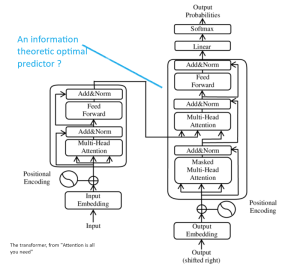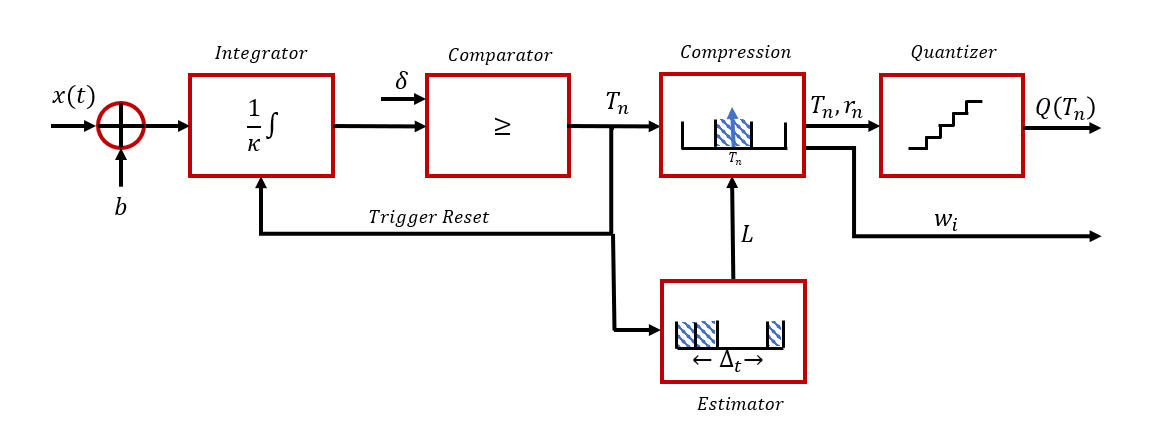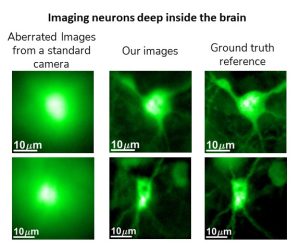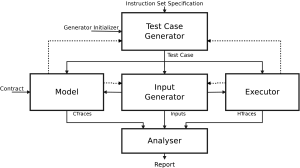Doing a research project during the BSc, allows for insight into postgraduate research opportunities at the faculty. Various faculty members offer diverse research projects aimed as the excellence students at the faculty. You may contact the faculty members in order to talk to them about the various research projects and choose a specific topic. This is your opportunity to get to know the different faculty members, so that they can serve as your future postgraduate supervisor.
See the list below for the various projects. Should you be interested in one of the research projects, you are encouraged to contact the faculty member directly.
Getting an approval for a certain research field, depends on the courses done by the students.
Please note:
- Other faculty members may be offering additional research projects, you may contact them directly.
- There are various other topics that may serve as research projects, you are more than welcome to suggest one to one of the faculty members and get their approval accordingly.
- You should check the personal websites of the faculty members, prior to contacting them.
There are 3 optional courses, as part of which, it is possible to conduct the research project:
The following chart presents (the academic credit points + the average necessary) as well as the credits that shall be accumulated upon the successful completion of each course.
| Course | Requirements | Credits |
|---|---|---|
| 044180 | An average of 91 I Accumulated Credit Points 100 | 4 |
| 044184 | An average of 86 I Accumulated Credit Points 100 | 2 |
| 044185 | An average of 86 I Accumulated Credit Points 80 | 1 |
| 044000 | For the members of the Excellence Students’ Program EMET | 4 |
For further details, please contact- Prof’ Yaniv Romano-who is responsible for the excellence students at the faculty: yromano@technion.ac.il
-
You should contact the faculty member by mail. The mail must include some background details about you (please mention the relevant courses taken, your previous projects and a brief description as to why this project interests you). Do not forget to include your academic merits and achievements.
-
One may start working on the research project once all the relevant introductory courses have been done. For example, if the project is in machine learning, then one must take course num. 046195 prior to commencing upon research. The projects are defined as semestrial, but may take much longer than just one semester (this is why it is highly recommended to start the project a year before the end of the studies). The requirements and scope of the project shall be in accordance with the academic credits accumulated for the course (1,2 or 4) respectively.
-
It is up to the faculty member to define the way in which the project shall be supervised to best suit the research needs.
-
Yes, there are. Normally, undertaking the project will require knowledge acquired in the introductory courses. Please find out all the specific information when contacting the faculty member.
-
The EMET students must talk to the head of their program prior to choosing a research project. By default, the research project shall be done as part of course num. 044000, designated to that effect.
-
It is preferable to do the project as part of the following courses: 044180, 044184, 044185, 044000, but the faculty members may supervise projects also in Project Bet course.
Systems & Control | Machine learning and intelligent systems & Computers
-
Progress in cyber-physical technologies such as autonomous vehicles (AVs) and wireless communications will enable the deployment of autonomous mobility-on-demand (AMoD) systems: fleets of AVs providing on-demand mobility. The main advantage of AMoD systems is that they can be controlled by a central operator in a system-optimal operation, i.e., optimizing global objectives such as the minimization of travel times of all the travelers in a given city. One aspect that could drastically improve system-optimal operation is ridesharing capabilities wherein an individual vehicle can drive multiple people that don’t necessarily share the same origin and destination. Unfortunately, existing approaches for AMoD routing cannot account for ridesharing capabilities in a computationally efficient manner, as ridesharing gives rise to tremendously difficult optimization problems.
In this project we will explore new algorithmic approaches for ridesharing AMoD via convex programming and recent advances in optimization of traffic flow. This project involves algorithm development, optimization, implementation in software, and simulation.Long Term Project
image: Ridesharing in Autonomous-Mobility-on-Demand

February 24
-
Progress in cyber-physical technologies such as autonomous vehicles (AVs) and wireless communications will enable the deployment of autonomous mobility-on-demand (AMoD) systems: fleets of AVs providing on-demand mobility. The main advantage of AMoD systems is that they can be controlled by a central operator in a system-optimal operation, i.e., optimizing global objectives such as the minimization of travel times of all the travelers in a given city. Conversely to conventional navigation providers computing the fastest route by passively considering congestion in an exogenous manner, AMoD systems enable one to consider the endogenous impact of individual vehicle’s routes on road traffic and travel time, and can thus be operated in a congestion-aware fashion. Unfortunately, developing effective congestion-aware routing approaches is challenging computationally, especially when considering realistic dynamic traffic flow models to capture the influence vehicles have on travel times.
In this project we will develop efficient algorithms for routing AMoD systems while accounting for dynamic traffic models. In particular, we plan on exploiting the underlying structure of the cell-transmission model (CTM), which accurately models flows via linear programs, in the development of fast and accurate algorithms. One idea that we could exploit is transforming the optimization problem resulting from CTM into a closely related min-cost flow problem, for which effective algorithms exist. This project involves algorithm development, optimization, implementation in software, and simulation.Long Term Project
image: Dynamic Routing of Autonomous Vehicles

February 24
Communication & Information Theory | Machine learning and intelligent systems & Computers
-
Abstract: Large language models receive tremendous attention in research and industry. These models are only trained to predict missing words in sentences provided as training data, yet they seem to have good capabilities in information retrieval as demonstrated by ChatGPT. Nevertheless, it is unclear to what degree the output of the model relies on memorizing text in the training data or whether the model truly learns semantic language rules and is capable of abstract representation of “knowledge”. In this project we propose an experimental synthetic information-theoretic framework to elucidate this problem. Generalizing well on the data in this experiment will show that the model learns the relatively simple generative model describing the training data rather than memorizing long sections of the training data.
Your Role: To explore the ability of a large transformer-based language model to describe a text with a relatively high entropy rate, that is produced by a relatively simple model. This will be achieved by generating synthetic data, training various models, and interpreting the results in information-theoretic terms.
Requirements: A background in NLP and some hands-on experience with training or fine-tuning large language models in the order of GPT2.0 or larger.
Advisors: Assistant Dr. Alon Kipnis (alon.kipnis@runi.ac.il) and Assistant Prof. Nir Weinberger (nirwein@technion.ac.il)
Long Term Project
image: Large language

December 23
-
In a DNA-storage system, information is stored in an unordered set of short reads. During the reading operation, each of these reads is duplicated multiple times, and then sequenced to obtain a noisy read. The noise includes substitution, deletion and insertion errors. The first step of the decoder is to successfully cluster the noisy reads.
Your Role: Designing and training a state-of-the-art machine-learning architecture to perform noisy clustering.
Requirements:
• Background in information theory or communication, machine learning, and DNN.
• Hands on experience with training DNN and transformers.Advisor: Assistant Dr. Nir Weinberger (nirwein@technion.ac.il)
Long Term Project
image: Clustering DNA

December 23
Computer Networks | Machine learning and intelligent systems & Computers
-
Neural networks have shown tremendous success in various tasks. At the same time, they have been shown to be vulnerable to various attacks. Adversarial example attacks generate small perturbations to inputs with the goal of causing a neural network to misclassify. While there has been a lot of work on proving local robustness of neural networks, all focus on the analysis of a single input at a time. Consequently, it is hard to obtain guarantees for large datasets in a practical time.
In this project, we will leverage the relations of inputs in a given dataset to design a verifier that reduces the analysis time by few orders of magnitude. The idea is to define a partial order over the analysis of a few inputs to predict the analysis result of other inputs, thereby significantly pruning the search space of the analysis.
Advisor: Dr. Dana Drachsler Cohen (ddana@ee.technion.ac.il)
image: CIF-TEM System

Long Term Project
December 23
Image & Signal Processing, Computer Vision & Bio-signals | Electronic Circuits, VLSI Systems & Power Systems
-
Analog to Digital Converters (ADCs) are among the most utilized components in digital systems today. An integrate-and-fire time-encoding-machine (IF-TEM) is an energy efficient asynchronous sampler. Utilizing the IF-TEM sampler for bandlimited signals, we introduce designs for time encoding and decoding with analog compression prior to the quantization phase. Before the quantizer, efficient analog compression is conducted based on the stationarity of the encoded signal, which is a fundamental characteristic of IF-TEM processing.
So far, the algorithm was only simulated in MATLAB.
This in a joint project with SIPIL lab and professor Alejandro Cohen
Project goal:
Implementing the sampler on hardware. The implementation will be on a PCB (Printed Circuit Board) using IC component. The students will design and simulate the PCB board. The board will be manufactured and the student will do a bring up procedure to the board. The sampler will work on audio signals.
This is a unique opportunity to experience mix signal (analog and digital) design.
Project duration: one semester with an option to two semesters
Supervisor: Mony OrbachLong Term Project
December 23
Image & Signal Processing, Computer Vision & Bio-signals | Electromagnetics & Photonics
-
Can we see through thick tissue layers without cutting the subject?
Seeing inside tissue is one of the hardest barriers in biomedical research and in medical imaging, mostly because cells inside the tissue aberrate and scatter the light waves passing through it. Even after propagating through tissue layers as thin as a few dozen micrometres, the resulting images are highly aberrated and are uninterpretable by the human eye. Despite this we develop a number of computational tools which can see biological components such as fluorescent neurons, deep inside the tissue.
The research will combine a number of tools in optics and algorithmic processing, including machine learning, statistics and advanced optimization.Advisor: Prof. Anat Levin (anat.levin@ee.technion.ac.il)
image: Imaging neurons deep inside the brain

Long Term Project
December 23
Electromagnetics & Photonics
-
The project aims to harness the novel concept of metagratings (MGs) for the development of dual-polarized broad-angle absorbers at mm-wave frequencies. Such conformal and low-cost printed-circuit-board (PCB) covers are in high need for radar applications, where means to suppress the strong multipath reflections stemming from metallic objects are required to enable accurate target identification.
MGs are low-profile devices composed of sparsely distributed subwavelength polarizable particles (meta-atoms), recently shown to enable precise manipulation of reflected and transmitted waves with unprecedented efficiency [1]. The key for achieving such performance lies in judicious engineering of the meta-atom constellation and particle geometry such that the interference between all scattered fields results in the desirable pattern [2]. Indeed, in the past couple of years, we in the META group have theoretically derived and experimentally verified an analytical model allowing synthesis of PCB MGs for prescribed beam deflection functions at microwaves [3].
More recently, we have utilized the fact that this model incorporates loss and inherently accounts for frequency and angle of incidence variation to explore the possibility to use such MGs as wide-angle absorbers. This was achieved by breaking the half-wavelength periodicity bound adhered to in conventional devices [4], shown to be beneficial when multifunctionality (e.g., multi-angle response) is desired [5]. Relying on a rather uncommon resistive sheet PCB technology, we were able to maximize loss by dissipating power in localized resistors defined in both internal and external layers. Despite promising results in preliminary experiments, the device versatility is still limited, absorbing signals only at a single polarization along one dimension, and relying on a somewhat unique (and potentially costly) fabrication process.
In the proposed project, the students will extend the analytical models and synthesis methodologies to develop dual-polarized absorption capabilities by combining two sets of dipole scatterers with orthogonal polarizabilities, possibly utilizing low-cost lossy substrates (e.g., FR4) to dissipate power in the bulk. Once the model is augmented correspondingly, the constraints associated with multi-angle absorption could be formulated, which, when resolved, would yield a fabrication-ready layout for the envisioned MG. If time permits, a prototype absorber would be manufactured and measured at the META group laboratory at the Technion.
Students will in analytical modeling and formulation, full-wave numerical simulations in commercial (industry-standard) solvers, and (if time permits) hands-on experiments.
Bibliography
[1] Y. Ra’di and A. Alù, “Metagratings for Efficient Wavefront Manipulation,” IEEE Photonics J., vol. 14, no. 1, pp. 1–13, Feb. 2022.
[2] Y. Ra’di, D. L. Sounas, and A. Alù, “Metagratings: Beyond the Limits of Graded Metasurfaces for Wave Front Control,” Phys. Rev. Lett., vol. 119, no. 6, p. 067404, Aug. 2017.
[3] O. Rabinovich and A. Epstein, “Arbitrary Diffraction Engineering With Multilayered Multielement Metagratings,” IEEE Trans. Antennas Propag., vol. 68, no. 3, pp. 1553–1568, Mar. 2020.
[4] Y. Ra’di, C. R. Simovski, and S. A. Tretyakov, “Thin Perfect Absorbers for Electromagnetic Waves: Theory, Design, and Realizations,” Phys. Rev. Appl., vol. 3, no. 3, p. 037001, Mar. 2015.
[5] Y. Yashno and A. Epstein, “Large-Period Multichannel Metagratings For Broad-Angle Absorption,” in 16th Int. Congr. Artificial Mater. Novel Wave Phenomena (Metamaterials), 2022.Advisor: Prof. Ariel Epstein (epsteina@ee.technion.ac.il)
Image: All Angle Absorbers

Project duration: Current Semester, Next Semester
December 23
Computers & Computer Networks
-
This project focuses on the methods to automatically detect data leaks present in modern CPUs which stem from the design flaws of speculative instruction execution. These leaks lead to severe security issues in these CPUs, allowing a sophisticated attacker to extract secrets, such as encryption keys, even if the software is perfectly correct. A well known example is SPECTRE attack which enables an attacker to extract data from memory by exploiting speculative execution of conditional branches.
This project builds on the recent work done in the Accelerator Computer Systems Lab in the Technion (ACSL) together with Microsoft Research Cambridge. The tools developed as part of this project have been used in production by Microsoft and some hardware vendors.
The students will deepen their knowledge of CPU architecture, hardware security, side channel analysis and attacks, and software/hardware testing and verification.
Advisor: Prof. Mark Silberstein (mark@ee.technion.ac.il)
Image: architecture

Project duration: Long Term
January 24
-
This project focuses on the development of new algorithms to enable a novel computational paradigm where computations are performed in the network while data is being transferred. Specifically, the computations are carried out by network routers and switches. In this project we will consider distributed computations with shared state, such as load-balancers, network monitoring and rate limiting. The key challenge is to enable execution of such computations in a resource-limited hardware of network switches, which in turn require new techniques and approaches.
The project involves learning new and relevant programming languages such as P4, distributed computing principles, approximate data structures and computer networks.
Advisor: Prof. Mark Silberstein (mark@ee.technion.ac.il)
Image: Mellanox-data-centric

Project duration: Long Term
January 24
Image & Signal Processing, Computer Vision & Bio-signals | Machine learning and intelligent systems | Communication & Information Theory | Computers & Computer Networks | Systems & Control
-
This project aims to innovate in the realm of speech enhancement, leveraging the advanced capabilities of head-worn microphone arrays, an area where significant strides have been made over several decades in improving speech quality and intelligibility. Traditional beamforming algorithms, primarily reliant on acoustic signals, often necessitate supplementary information or inferential mechanisms for effective beam steering. However, the dynamic nature of head-worn microphone arrays, such as those in smart headphones, smart glasses, and virtual/augmented reality headsets, poses unique challenges due to the rapid orientation changes relative to the room and sound sources.
The advent of these devices, equipped with head-tracking sensors and video recording functionalities, paves the way for a novel category of speech and acoustic signal processing algorithms. These algorithms can harness multimodal sensor data not only to compensate for shifts in head orientation but also to leverage these changes for enhanced auditory processing. This capability is particularly pertinent in addressing the well-known cocktail party problem, enabling users to concentrate on a single conversation amidst an environment of overlapping conversations and ambient noise.
Our project aims to develop and refine speech enhancement algorithms specifically tailored for head-worn microphone arrays with access to positional information. By incorporating this data, the algorithms can significantly improve the listening experience for users of wearable devices, assisting them in navigating complex auditory environments typical of the cocktail party scenario. We intend to utilize the dataset from the SPEAR challenge to validate and benchmark our algorithms, thus contributing to the evolution of assistive listening technologies that pass beyond traditional boundaries, offering augmented auditory capabilities to a broader spectrum of users, not limited to the hearing-impaired
image: Spear

Long Term Project
December 23
Communication & Information Theory | Systems & Control
-
In the future, autonomous vehicles will be able to communicate with each other in order to share information and reach joint decisions. For instance, a vehicle about to pull its brakes before a road hazard could notify the vehicles behind it to avoid a chain collision. In another setting, vehicles could share sensor information to improve their knowledge of the surrounding environment. To give one more example, vehicles could coordinate among themselves who gets the right of way in an unsignalized intersection.
To facilitate such applications, vehicles make decisions by integrating information received in the vehicular network with optimization algorithms. Unfortunately, such algorithms typically assume a perfect communication network wherein information shared between the robots never gets lost, delayed, or corrupted. In reality, communication networks rarely provide such guarantees, which can compromise the performance of the vehicular system and even lead to hazardous outcomes.
In this project, we will explore a synergistic approach that designs the optimization algorithm alongside the communication network upon which it will run. In the first step, we will consider a specific multi-vehicle task of target tracking and will study the effect of communication failures on the performance of the system using a naive communication-oblivious algorithm. In the next step, we will consider a novel communication architecture of network coding, redesign the optimization algorithm around it, and explore the performance of the overall system.
Long Term Project
February 24
Students tell….
-
Project Description: The superresolution problem tries to take a low-resolution image and produce a high-resolution image from it so that on the one hand the image will have a natural look and complete fine details in a logical way, and on the other hand the resulting image will match the original low-resolution image. Since there are several options for such a high-resolution image, the goal of the project is to develop a textual user interface through which the user can travel through the super-resolution space of the low-resolution image, i.e. find a logical high-resolution image that best matches the text the user enters.
Personal experience: The project was challenging and very interesting, and attracted me to the field of generative modeling, where I continued on to an advanced degree. The uniqueness of the research project was the freedom in choosing the solution and the importance of creativity, which taught me a lot about the research process.
Supervisor: Prof. Tomer Michaeli, Dr. Yuval Bahat
Partner: Rotem Idelson
Research area: Machine learning and intelligent systems, Image & Signal Processing, Computer Vision & Bio-signals


